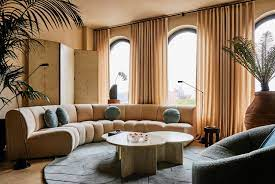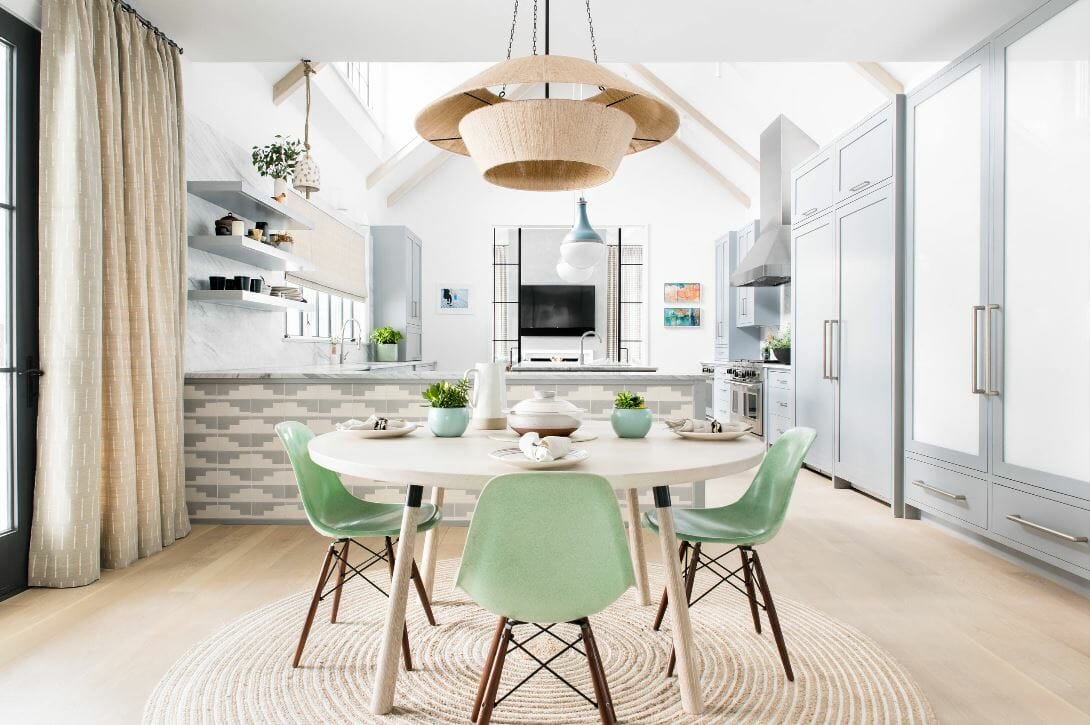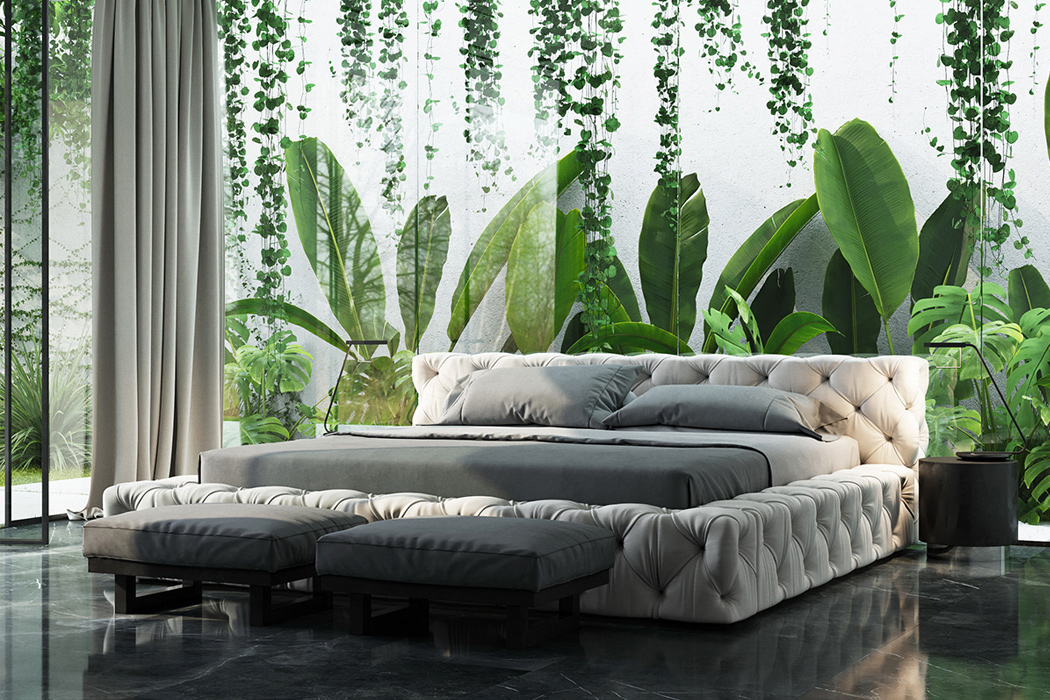Are you looking to design your dream home but don’t know where to start? Interior design can be overwhelming, and getting lost in a sea of options is easy. Fortunately, the perfect interior is within reach with the right tips and tricks!
This blog post will cover some of the best interior design ideas to help make your house a home. From clever color palettes to essential furniture pieces, we’ll discuss everything you should consider when designing interiors. So read on for helpful tips and advice from interior design experts so you can create a comfortable and stylish space exactly how you imagined it!


Interior Design
Interior design is the art of creating a functional and aesthetically pleasing space within a home. It involves understanding how to select materials, furniture, colors, and textures to create an inviting atmosphere. This includes everything from selecting the right artwork for your living room wall to choosing the proper lighting fixtures for your kitchen.
1. Choose a Neutral Color Palette
A neutral color palette is one of the easiest ways to create harmony in your home. Use beige, gray, white, and taupe to create a timeless look that won’t go out of style soon. You can also add a few accent colors if you want more contrast or vibrancy in your space.
2. Utilize Wallpaper
Using wallpaper is an excellent way to add texture and pattern to any room without making it feel overly busy. Stick with subtle patterns for small spaces like powder room or bolder designs in larger rooms like living rooms and bedrooms.


3. Invest in Quality Furniture
Investing in quality furniture is one of the best interior design ideas. Quality pieces can withstand the test of time and will make your space look polished and timeless.
4. Add an Area Rug
Area rugs add warmth to a room and act as excellent decorating accents. From natural fibers like jute or sisal to colorful cotton rugs, there are plenty of options for every style and budget.
5. Hang Artwork
Hanging artwork is a great way to instantly elevate any space in your home. Whether it’s a painting, photograph, or even prints from magazines, art makes for an interesting conversation piece that won’t go unnoticed by guests.


6. Lighten Things Up
Lighting can change the atmosphere of any room, so don’t forget to take advantage of it. Install dimmers and use different types of lighting, such as table lamps, floor lamps, and sconces, to vary the mood in each space.
7. Incorporate Nature
Bring elements of nature into your home with houseplants or cut flowers. Not only will they add a pop of color, but they will also improve air quality and create a calming atmosphere.
8. Create an Accent Wall
Add some interest to your walls by creating an accent wall. Paint it a bright shade or use wallpaper to make the wall stand out from the rest of the room.


9. Make Storage a Priority
Enough storage is essential in any home, so include plenty of it in your design plans. Cabinets, bookcases, and ottomans are all great options for tucking away clutter and making the most out of your space.
10. Mix Different Textures
Combining different textures in one room will create visual interest without appearing too busy or cluttered. Try pairing knits with leathers and woods with metals for a unique look that’s both stylish and comfortable.
11. Add Mirrors
Mirrors are an easy way to make small spaces appear larger, plus they reflect light which can vastly improve the brightness of any room. Place them strategically to open the room and create a more spacious feel.


12. Invest in Window Treatments
Window treatments are essential for controlling light, providing privacy, and adding style to your home. Whether you opt for curtain fabric, shades, or shutters, they can drastically change the look of any room
13. Display Personal Items
Displaying personal items like photographs or souvenirs is a great way to add personality to your space. If you don’t want to hang things on the walls, display small items in decorative bowls or boxes instead.
14. Make it Cozy with Throw Pillows & Blankets
Throw pillows and blankets are perfect for cozying up any space. Choose colors and patterns that complement your other design elements for a pulled-together look.
15. Incorporate Technology
Technology can be incorporated into any home in a variety of ways. From smart thermostats to voice-activated assistants, making your house as tech-savvy as you want it to be is easy.


16. Group Antiques By Color
If you want to add some character to your home, consider grouping antiques by color. This eclectic and timeless look will add a unique touch to any room.
17 Find Another Spot For Flowers
Instead of placing fresh flowers on your counter or dining table, try using them to decorate other surfaces. Hang a bouquet from the ceiling or place a small vase on the windowsill for an unexpected touch.
18. Set Up A Cozy Reading Spot
Set up a comfy spot to relax and read in. Choose a corner or nook and add comfortable seating, like an armchair or chaise lounge, with plenty of pillows. Place shelves nearby for books and magazines, and don’t forget the reading light!
19. Play With Patterns & Geometrics
Patterns are another great way to inject color into any space. From wallpaper to area rugs, there are endless options for bringing patterns into your home. Just be sure not to overdo it – stick to one or two patterns at most!
20. Consider The Composition
No matter what you’re designing, always consider the overall composition of the room. Think about how colors, shapes, and textures combine to create a unified, inviting,, stylish look.
By following these interior design tips, you can create the perfect space that reflects your style while being functional and comfortable. Remember to be patient when creating your dream home – planning and executing a successful design scheme takes time!
Principles of Interior Design
Balance
Incorporating balance into a design can be achieved by using different colors, textures, patterns, and pieces in an arrangement with equal visual weight.
Unity
Unity is the idea of creating a cohesive look throughout the entire space. This can be done by incorporating elements like color schemes, textures, furniture styles, and shapes to create a sense of harmony.
Rhythm
Rhythm refers to repeating certain elements within the space to create flow throughout. This could be accomplished by repeating colors, shapes, or other decor items like artwork or sculpture.
Emphasis
Emphasis involves drawing attention to particular areas or elements in a space. This could be done with pops of bright colors, larger-scale furniture pieces, or bold artwork.
Scale & Proportion
Scale and proportion refer to the size of furniture and decor items in the space. Scale is about ensuring everything looks proportional, while the proportion is ensuring all elements are sized correctly for the room.
Harmony & Contrast
Harmony relates to different unifying elements within a design, whereas contrast refers to juxtaposing them against each other for an interesting effect.
Functionality
Functionality involves incorporating aesthetically pleasing and practical pieces for everyday use. This could include choosing furniture with storage capabilities or creating efficient workflow areas throughout the space.
Benefits of Best Interior Design
Creates an Inviting Atmosphere
An interior designer can create a welcoming atmosphere for everyone who enters the space. From inviting furniture arrangements to soothing color palettes and decor, they know how to make people feel comfortable in any environment.
Enhances Focus & Productivity
Interior design can help enhance focus and productivity by creating more organized spaces better suited for studying or working from home.
Maximizes Space Efficiency
By utilizing all available space efficiently, an interior designer can ensure each area is used optimally without making it feel cluttered or cramped.
Improves Mood & Wellbeing
From choosing calming colors and textures to creating soothing lighting effects, interior design can help reduce stress and improve moods in any environment.
Enhances Aesthetics & Curb Appeal
Interior designers know how to use color, texture, light, and furniture pieces to create beautiful and inviting environments. They can also incorporate elements like plants or artwork to further enhance the look of a space.
Supports Health & Safety
Interior design experts ensure all safety standards are met when creating a room layout. This includes ensuring adequate ventilation, proper lighting for reading tasks, and ergonomic seating solutions to prevent aches and pains from sitting too long in one position.
Considers Building Regulations
An experienced interior designer will be familiar with local building regulations and can ensure all elements of the design meet any relevant requirements.
Increases Property Value
Investing in good interior design makes a home more aesthetically pleasing and adds value to the property when it comes time to sell.
Saves Money & Time
By planning and creating an efficient layout, interior designers can save money and time in the long run as they have considered all potential problems before starting the project.
Creates Unique Spaces
Finally, interior designers can create unique spaces that reflect their clients’ personalities and lifestyles. This includes customizing elements like furniture pieces or artwork to make a space unique!
Tips to Maintain the Interior Design
1. Clean Regularly
Regular cleaning is essential to maintain the beauty of any interior design and prevent dirt build-up on surfaces. Use soft cloths and mild soaps when wiping down furniture, floors, and other areas.
2. Protect Soft Furnishings & Floors
Use slipcovers or floor mats where necessary to protect upholstery and carpets from dirt or staining. For wood furniture, consider using wax polish to protect against scratches or marks.
3. Choose Durable Fabrics & Accessories
Interior designers typically recommend investing in quality fabrics that are both durable and easy to clean. Similarly, selecting accessories that can withstand daily wear will ensure they look great for longer.
4. Repair or Replace Anything Damaged
If any items are damaged, broken, or torn, it is best to repair them immediately or replace them if necessary. This will help maintain the overall aesthetic of a space and ensure all furniture pieces remain in peak condition.
5. Brighten Up Dark Spaces
Dark rooms can be instantly transformed with bright colors and proper lighting fixtures. To tackle darker areas without breaking the bank, consider using mirrors to reflect more light into the room.
6. Refresh Your Space Seasonally
Seasonal changes can often determine an interior design’s look and feel, so don’t be afraid to change your color palette or add new accessories every few months. This will help refresh the space and keep it looking vibrant.
7. Re-evaluate Your Storage Solutions
Finally, ensure you use the best storage solutions to fit your needs. Consider investing in furniture with built-in compartments or fun wall organizers to ensure everything has its place.
Overall, interior design can be an enjoyable and rewarding process resulting in a beautiful living space tailored to your style and preferences.
FAQs
What is the 80-20 rule in decorating?
The 80-20 rule, also known as the Principle of Composition, is a design rule that suggests that when decorating a room or space, you should use 80% of one color for the main elements and 20% for accent colors. This helps to ensure that your wall space looks unified rather than cluttered.
How do I decide on furniture placement?
Furniture placement can be tricky, but some important rules must follow. First and foremost, make sure none of your furniture pieces block pathways or walkways. Remember to leave enough open space between pieces so they don’t crowd each other. And finally, consider the size of the room when choosing larger items such as couches and coffee table.
What colors should I use in my interior design?
The colors you choose depend on the feel you want to achieve. Generally, warm colors like red, yellow, and orange create a cheerful atmosphere, while cooler tones like blue and green provide a calming vibe. For something a bit more modern, consider using neutrals like gray or white.
Remember to try different combinations until you find the one that works best for your space. In the dining room, there should be natural light, cocktail table wall coverings, and peel-and-stick wallpaper.
What are the 3 Es of interior design?
The 3 E’s of interior design are “Environment,” “Experience,” and “Expectation.” Environment refers to the overall feeling of the space, while Experience is how it makes you feel when you walk into it. And Expectation is what you hope to achieve when decorating your home. Use these three elements to create a balanced and inviting atmosphere in your interiors!
What is the 60 30 10 rule in interior design?
The 60 30 10 rule is a simple and effective guide to creating a balanced color palette in your home. According to this guideline, you should use 60% of one dominant color for your walls, 30% of a secondary shade for furniture and accents, and 10% of an accent hue for accessories like throw pillows or artwork. The key is to pick hues that complement each other so your space looks unified.
What are the basics of interior design?
Interior design is all about creating functional spaces with aesthetically pleasing elements. To get started, consider the purpose of each room – how will it be used? From there, you can begin to plan furniture placement and choose colors and materials. And finally, design your formal living room to serve double duty as a cozy lounge area.
What is the 2 3 rule for decorating?
The 2 3 rule is a simple way to ensure your furniture is scaled correctly for the room. According to this guideline, two-thirds of the furniture should be two-thirds of the size of the same room, and one-third should be one-third of the size. This helps ensure that items don’t appear too big or small space relative to each other. Try it out in different rooms and see what works best!
Conclusion
Hopefully, our tips have inspired you to create your dream home. Interior design can initially seem overwhelming, but with the right research and know-how, you’ll be well on your way. Explore different color palettes, textures, and patterns to determine what suits your style best. Don’t forget to invest in essential pieces of furniture that look great and provide a function for your everyday life. With these interior design ideas, you’re ready to start transforming your house into a warm and inviting home!

